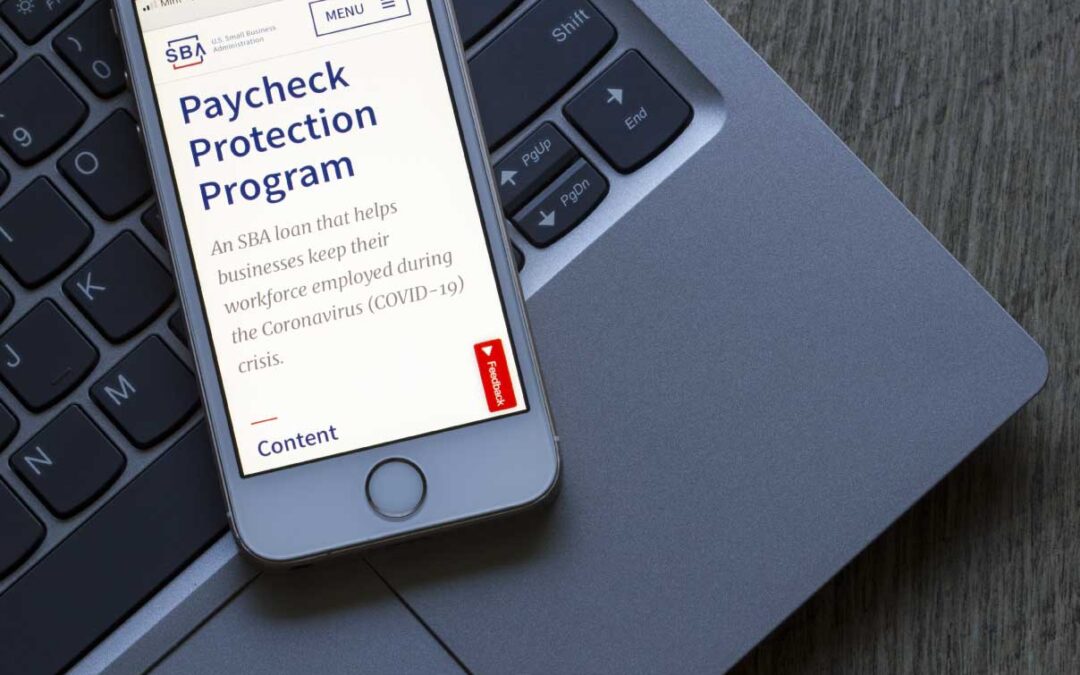The Department of the Treasury and the Small Business Administration have issued interim final rules on the revised Paycheck Protection Program (PPP). The PPP was originally part of the Coronavirus Aid, Relief, and Economic Security (CARES) Act and ended on August 8, 2020. The program was revised and reinstated as part of the Economic Aid to Hard-Hit Small Businesses, Nonprofits, and Venues Act (the Economic Aid Act), which was itself part of the Consolidated Appropriations Act, 2021. The PPP was an extremely popular program and has been credited with saving many jobs. Loans under the PPP are eligible for forgiveness when businesses retain employees and use the funds for certain qualifying expenses.
Although the Consolidated Appropriations Act was signed on December 27, 2020, new loans could not be made until rules were issued. The Treasury Department and Small Business Administration (SBA) have now issued rules consolidating changes to the forgiveness process and rules for “Second Draw Loans.” Under these rules, the program will formally reopen on Monday, January 11th for priority applicants and Wednesday, January 13th for other applicants. As a practical matter, most lenders will require additional time to review the new regulations and update systems before issuing loans.
Eligibility
There are a number of major changes to PPP. Businesses should review these changes before applying. Fewer companies will qualify for forgivable loans under the revised program.
To qualify for a second PPP loan, a business must have:
- 300 or fewer employees.
- Used (or will use) initial PPP funding before the disbursement of the second loan.
- Experienced a revenue (gross receipts) reduction of 25% or more in 2020 as compared to 2019.
Second round loans are limited to the lesser of 2.5 times average monthly payroll costs or $2,000,000. Restrictions apply when calculating payroll costs, including limits on individual compensation. Some businesses in hard-hit sectors (NAICS codes beginning with 72) may receive up to 3.5 times average monthly payroll costs.
As was the case with the original PPP, affiliation and common ownership rules apply. However, additional borrower restrictions are now in place, including prohibitions on publicly traded companies, lobbying organizations, businesses owned by certain government officials and those “organized under the laws of the People’s Republic of China or the Special Administrative Region of Hong Kong, or with other specified ties to the People’s Republic of China or the Special Administrative Region of Hong Kong.”
Use of Proceeds
As was the case with the original PPP, funds are intended to be used primarily to support employee retention. Under the recent revision, qualifying expenses include:
- Payroll costs, including group health care, life, disability, vision, or dental premiums.
- Mortgage interest rent and utility payments.
- Interest payments on other debts incurred before February 15, 2020.
- Refinancing of an EIDL loan made between January 31, 2020 and April 3, 2020.
- Covered operations expenditures (payments for any business software or cloud computing service that facilitates business operations, product or service delivery, the processing, payment, or tracking of payroll expenses, human resources, sales and billing functions, or accounting or tracking of supplies, inventory, records and expenses).
- Covered property damage costs related to property damage and vandalism or looting due to public disturbances that occurred during 2020 that was not covered by insurance or other compensation.
- Covered supplier costs which are essential to the operations of the business.
- Covered worker protection expenditures.
Employers who wish to maximize loan forgiveness should carefully monitor employee counts and track qualifying expenses. At least 60 percent of PPP loan proceeds must be used for payroll costs.
Covered Period
The original PPP required that funds be used during an 8-week “covered period,” which was later expanded to 24-weeks. The expansion greatly aided many employers who would have otherwise found it difficult to maximize loan forgiveness. The second round PPP allows employers to choose a period of between 8 and 24 weeks, providing even greater flexibility for borrowers.
Webinar
We have scheduled a webinar to discuss the new PPP provisions as well as other employment related provisions of the Consolidated Appropriations Act, 2021. The webinar will be held at 2:00 PM Eastern time on January 14, 2021.
About the Authors. This update was prepared by HR Pros, LLC, a national HR consulting firm that helps companies reduce operational and employment related risks. Contact Christopher Brown (cbrown@hrpros.biz), Philip Roach (philipcr@hrpros.biz) or Josh Blinkey (jblinkey@hrpros.biz) for more information.
The information provided in this update is not, is not intended to be, and shall not be construed to be, the provision of tax or legal advice, nor does it necessarily reflect the opinions of HR Pros, LLC or our clients. The content is intended as a general overview of the subject matter covered. HR Pros, LLC is not obligated to provide updates on the information presented herein. Those reading this alert are encouraged to seek direct counsel on tax or legal questions.
© 2021 HR Pros, LLC. All Rights Reserved.

